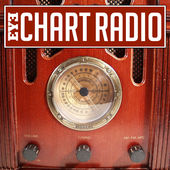 Unless you’ve been living under a rock for the past week or so, you probably can’t have helped but notice that this Saturday marked the release of Apple’s new mobile tablet device, the iPad. With the iPad, Apple tries to break open a market segment that major market forces, like Microsoft and Intel, have been unsuccessfully trying to crack for years. Microsoft alone has made no fewer than four attempts at defining mobile tablet/slate platforms, including the Tablet PC and the dead-on-arrival UMPC (“Origami”) devices.
Unless you’ve been living under a rock for the past week or so, you probably can’t have helped but notice that this Saturday marked the release of Apple’s new mobile tablet device, the iPad. With the iPad, Apple tries to break open a market segment that major market forces, like Microsoft and Intel, have been unsuccessfully trying to crack for years. Microsoft alone has made no fewer than four attempts at defining mobile tablet/slate platforms, including the Tablet PC and the dead-on-arrival UMPC (“Origami”) devices.
So what makes Apple think that the iPad will succeed where so many others have repeatedly failed? There’s a vocal contingent that believes a market for this type of device just doesn’t exist. There’s also a contingent that’s intensely opposed to the closed model that Apple typically imposes on its products and services. And, of course, there’s the sin-of-all-sins: it doesn’t support Flash (a shared character flaw that the iPhone and iPod Touch have somehow endured). With all of this stacked against it, things don’t look so good, do they?
I don’t think I can remember any product that’s been so divisive and polarizing as the iPad. The haters and the fanboys alike have been all up-in-arms, way before anyone had actually seen or used the damned thing! Professional colleagues of mine—people I greatly respect—have been nastily slamming the product on Twitter and on their blogs. When I asked Molly Wood, one of my favorite CNET editors and tech pundits, whether she’d be buying one, I believe her response was, “Hell, no.” Meanwhile, others claim the iPad will change everything.
Having tried (and ultimately retired) several early tablet devices, there was no doubt in my mind that I’d be buying an iPad. The only question was “which model?” I deliberated for weeks over whether I’d be buying the WiFi-only version released on April 3 or the WiFi+3G model, which wouldn’t be available until “Late April”. After much personal waffling and some poignant feedback from the Twitter community, I pre-ordered the one with 3G.
Then, last week: the media frenzy. News reports, reviews, magazine covers, and even an entire episode of Modern Family heralded the new device. My clients were talking about it and posting links to review sites. My mother—who’s never used email or the Web in her life—was asking me about it. Then the lines started forming. In Palo Alto and New York City, people were queueing and preparing to camp overnight. I just couldn’t take it anymore—I had to have one, and I couldn’t wait until “late April” to get mine.
Buying the iPad
There’s a secret to buying a new Apple device on the day it’s first available: arrive at the Apple Store a few hours after the store opens. While my local Best Buy didn’t have the product available in time for their store opening, the Bethesda Apple Store had enough stock to still be selling to customers arriving at 11:00 a.m. It’s not that there wasn’t a line—there was. But the Apple Store staff was friendly, organized, and efficient. They served breakfast bars and snacks while customers waited, regularly surveyed the line to see if their supply would meet with the demand, and let people know which models were still available all the while. I arrived at 10:30, I was in the store by 10:45, and I left the store at 10:49 with iPad, dock, and case in tow. Meanwhile, the Geeks at Best Buy were claiming that they didn’t get their 30-unit shipment.
Surveying the iPad
There’s a common (and not necessarily inaccurate) belief that the iPad is just a big iPod Touch. People accuse the product of this quality, as if it’s a bad thing. Why is it a bad thing? With an iPhone or iPod Touch, you can surf the web better than on most mobile devices; read and compose email; manage your calendar; find nearby restaurants with available seating; get directions; listen to music; buy and watch video and movies; control your a/v and home automation system; read books; and thousands (maybe millions?) of other things.
Imagine all of that on a larger screen. Imagine scrolling through web pages at their full resolution. Imagine reading email on a full-size screen and composing messages with a full-size virtual keyboard. Imagine reading maps or watching movies and TV shows on that same screen. Imagine the iTunes Store looking like, well, the iTunes Store. Imagine the pages of an eBook that look and behave just like their analog counterparts. Then think about what else you could do with all that real estate….
You could edit documents, slides, and ledgers; you could draw…or paint; you could play board and table games; you could read the comics or the entire newspaper; you could blog; you could present; you could play a musical keyboard; you could use it as a digital picture frame. With more than double the screen space in both dimensions, the possibilities are likely an order of magnitude greater than on Apple’s earlier, smaller mobile products.
So clearly I like the idea of a big iPod Touch. Enough so that I bought the iPad. I think it holds promise and opportunity. I think it’s useful—far more useful than the tiny, clunky netbook sitting in the corner of my TV room. I don’t have to unhook the iPad from it’s charger (it docks); I don’t have to turn it on and wait for it to boot or resume; I don’t have to struggle with its tiny track-pad; I don’t have to recharge it after just three hours of use; I don’t have to dig it out of my bag at airport security (or do I?).
Using the iPad
Spend five minutes with the iPad, and you’ll find that it delivers everything it offers. The screen is clear and beautiful. I was leery of the seemingly low 1024 x 768 screen resolution, but it delivers bright, crisp, clear images. Get over the somewhat reflective, glossy finish (because that’s just how screens are designed now), and you’ll find that the LED backlight is more than adequate to adjust for both interior and exterior lighting conditions. Slide, flick, and pinch with your fingers, and you’ll notice graphic processing that is immediately responsive unlike anything you’ve ever seen on a mobile device. In fact, you may not notice it at all—it just works and reacts like you’d expect it to. If you know how to use an iPhone or iPod Touch, then you’ll know how to use the iPad. But it’s bigger and faster.
The built-in applications take advantage of the iPad’s impressive processing speed and large display area. Viewing and manipulating maps, including Street View, is smooth and instantaneous. Calendars look like they belong on your wall or desk. And video…I’m not even quite sure how to describe video playback on this thing. It’s gorgeous. HD video can be purchased on or synched to the iPad, and the display quality and rendering is flawless.
The iPad’s virtual keyboard may take some getting used to if you haven’t used an on-screen touch keyboard before. While I aspire to touch type on the keyboard in landscape mode, I’m finding the portrait-mode keyboard easier for hunt-and-peck typing. If you’re familiar with the iPhone’s soft keyboard, you’ll be pleased to find that the iPad adds basic punctuation to the main keyboard. And if you’re thinking of doing any heavy-duty typing, you can add a docked or Bluetooth keyboard—a feature missing from the iPhone and iPod Touch.
In addition to everything else, the iPad is a book reader—an excellent reader. Both Apple and Amazon have released free reader apps, giving you access to a vast library of eBook content for purchase, including your existing Kindle library. And, of course, you have access to your entire Audible library in iTunes as well.
Using the Apps
What makes the iPhone OS devices most useful and exceptional is the enormous collection of applications available in the App Store from Apple and third-party developers. Out of the box, the iPad can run and sync with most iPhone apps, but don’t get too excited about that. While they may technically function on the larger screen, iPhone apps running in the 1X and 2X magnification modes are far from ideal. At 1X, apps seems sorely lacking, while the 2X mode looks blocky and over magnified. And unlike all other iPad functions (including the OS itself), iPhone apps won’t work in landscape mode unless the app is written to support it.
So what about apps specifically designed for the iPad? Well, there’s good news and bad news there. Technically, Apple has only been accepting iPad apps for a little over a week, so the store and the apps it contains are pretty young right now. And that’s the nicest possible way I know how to say that I hope (and expect) it will get better in the coming weeks. Apple’s own iWork apps are quite impressive, and at $10 apiece, they seem to be setting the baseline against which all other heavy-duty iPad apps will get measured. Meanwhile, the Omni Group introduced OmniGraffle for the iPad at nearly $50 in the same week that WolframAlpha was re-introduced for iPhone and iPad at just $2. Clearly the market will need to work out an optimal pricing model, just like it did for iPhone apps. I bought WolframAlpha, and I’d buy OmniGraffle at $10, but there’s no way in Hell that I’ll spend $50 for it. Period.
On the free side, there are some good and bad entrants worth mentioning:
- If there’s any doubt about whether Amazon prioritizes distributing content or product, the Kindle app for iPad should put that to rest. In fact, you can rest assured that your investment in Kindle content is safe and ready for your iPad in a reader that rivals Apple’s own iBooks app.
- Netflix garnered significant attention last week for introducing an iPad app that would play content from your instant queue. The reality is that the Netflix “app” is nothing more than the Netflix web site, reworked to render video in a device-compatible format. It’s nice that it’s there, but it’s a rudimentary proof-of-concept offering, it’s buggy and sluggish, and some basic site features—like rating titles and reordering your queue—don’t work at all. Hopefully they’re planning something better for a future release than just throwing an HTML5-ish version of their site into a browser control.
- The ABC Player is a gorgeous and intuitive portal to the network’s online streaming content. That’s the good news. The bad news is that every time I’ve tried to play a video in the app, it crashes.
- The Weather Channel’s TWC MAX+ is an impressive, visually-engaging aggregator of weather information, including forecasts, maps, and local information. My only complaint is the entirely useless home screen that presents nothing but a top-level view menu.
- Epicurious is a gorgeous and intuitive cookbook with shopping list features and another beautiful but otherwise entirely useless home screen.
- BBC News delivers updated news stories and videos in an easy-to-use and easy-to-read format that’s optimized for the larger screen of the iPad.
- The ever-present Evernote is now available for the iPad, and it looks and works pretty much like you’d expect. These guys get how Apple users think and work.
- Now Playing is an iPhone movie information and showtimes app that’s been ported to the iPad platform. Their approach: make it wider. No, seriously…that’s all this app seems to offer over the iPhone version. They’ve done absolutely nothing to flatten their application hierarchy (as Apple’s iPad UI Guidelines recommend) or otherwise take advantage of the additional screen space.
- HomeSeer’s HSTouchPad is pretty much what it sounds like—a touchpad app for HomeSeer home automation software. Unfortunately, it would seem that HomeSeer’s developers didn’t even bother to skim Apple’s iPad Human Interface Guidelines. Users would be better off running HomeSeer’s amateurishly-designed web app in Safari.
- Google’s popular suite of web-based cloud applications—including Gmail, Calendar, Reader, and Docs—is iPad ready! Just fire up Safari and go.
- My recommendation to the team responsible for the Zillow real estate app, recently rereleased to support the iPad: go back to the drawing board. Seriously.
Life Goes On…and Gets Better
So the iPad is here, and I have one. On initial inspection, it doesn’t seem to be an enormous failure, nor can we yet conclude it’s the game changer that many have suggested (and I believe). That’s the objective perspective. My more subjective opinion is that it’s a pretty damned amazing device, and I suspect that mine will become a common appliance around the house, on the coffee table, and in my travel bag. Some things seem clear: iPad v 1.0 makes many productivity, entertainment, and general computing functions simple and enjoyable—but there’s still room for improvement. Hardware alone cannot make this market segment successful. Developers must improve their software offerings, the app market pricing must rationalize somewhat, and Apple will likely evolve the iPad hardware over coming years. Frankly, I can’t wait.
 Despite my knowledge, interest, and background in Microsoft products, I’m a Mac. And I listen to Mac OS Ken daily for my fix of Apple-related news. When Ken started EYE Chart Radio, a weekly news analysis show with Mike LaPlante, I was all in. Well Ken’s now moved on to new adventures, and Mike has carried the show forward with a rotation of guest hosts.
Despite my knowledge, interest, and background in Microsoft products, I’m a Mac. And I listen to Mac OS Ken daily for my fix of Apple-related news. When Ken started EYE Chart Radio, a weekly news analysis show with Mike LaPlante, I was all in. Well Ken’s now moved on to new adventures, and Mike has carried the show forward with a rotation of guest hosts. I join Tom Merritt and Veronica Belmont on this episode of Daily Tech News Show to talk about Apple’s latest moves to bring HomeKit front and center as the method of choice for iPhone users to manage and control their connected home products.
I join Tom Merritt and Veronica Belmont on this episode of Daily Tech News Show to talk about Apple’s latest moves to bring HomeKit front and center as the method of choice for iPhone users to manage and control their connected home products. As listeners of the HomeTech.FM podcast are aware of, Jason is in the midst of a move. And things can go wrong when you move. Hopefully we’ll hear Jason back at the mic soon, but in the meantime I was happy to stand in for Jason and discuss the latest Apple WWDC announcements with Seth.
As listeners of the HomeTech.FM podcast are aware of, Jason is in the midst of a move. And things can go wrong when you move. Hopefully we’ll hear Jason back at the mic soon, but in the meantime I was happy to stand in for Jason and discuss the latest Apple WWDC announcements with Seth. With Kent away last week, my friend Anthony (aka Amos; aka Ethan) asked me to co-host the latest episode of The Ritual Misery Podcast with him. After discussing the dangers of wireless headsets, I share my frustration about a disappointing TED Talk from Nest CEO Tony Fadell.
With Kent away last week, my friend Anthony (aka Amos; aka Ethan) asked me to co-host the latest episode of The Ritual Misery Podcast with him. After discussing the dangers of wireless headsets, I share my frustration about a disappointing TED Talk from Nest CEO Tony Fadell. Unless you’ve been living under a rock for the past week or so, you probably can’t have helped but notice that this Saturday marked the release of Apple’s new mobile tablet device, the iPad. With the iPad, Apple tries to break open a market segment that major market forces, like Microsoft and Intel, have been unsuccessfully trying to crack for years. Microsoft alone has made no fewer than four attempts at defining mobile tablet/slate platforms, including the Tablet PC and the dead-on-arrival UMPC (“Origami”) devices.
Unless you’ve been living under a rock for the past week or so, you probably can’t have helped but notice that this Saturday marked the release of Apple’s new mobile tablet device, the iPad. With the iPad, Apple tries to break open a market segment that major market forces, like Microsoft and Intel, have been unsuccessfully trying to crack for years. Microsoft alone has made no fewer than four attempts at defining mobile tablet/slate platforms, including the Tablet PC and the dead-on-arrival UMPC (“Origami”) devices. As I’m packing to leave for CES, I thought I’d jump ahead a little and throw my chips on the table with my own predictions for Macworld announcements. Yes, you read it right–not CES…Macworld. Here’s what I think we’ll see this year at Macworld:
As I’m packing to leave for CES, I thought I’d jump ahead a little and throw my chips on the table with my own predictions for Macworld announcements. Yes, you read it right–not CES…Macworld. Here’s what I think we’ll see this year at Macworld: Now that I’m used to surfing through YouTube videos on the television with my remote, I have to wonder: what’s next on the horizon for Apple TV?
Now that I’m used to surfing through YouTube videos on the television with my remote, I have to wonder: what’s next on the horizon for Apple TV?